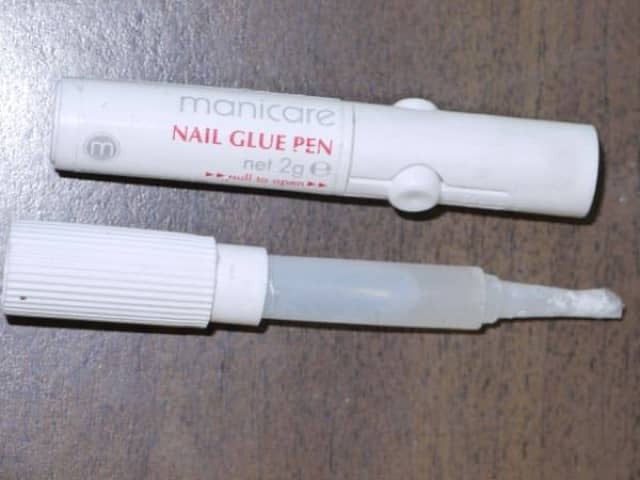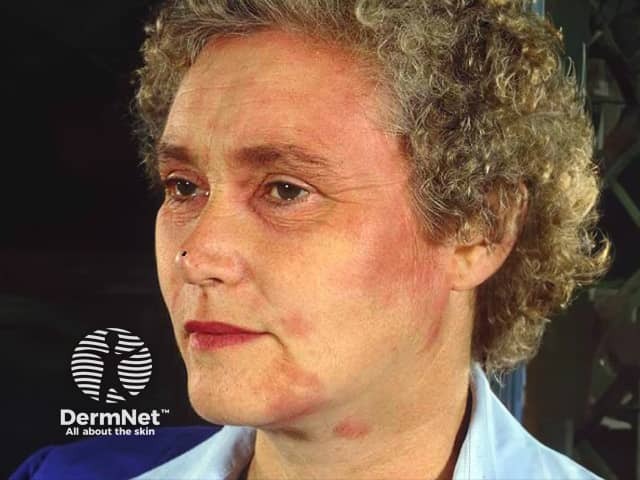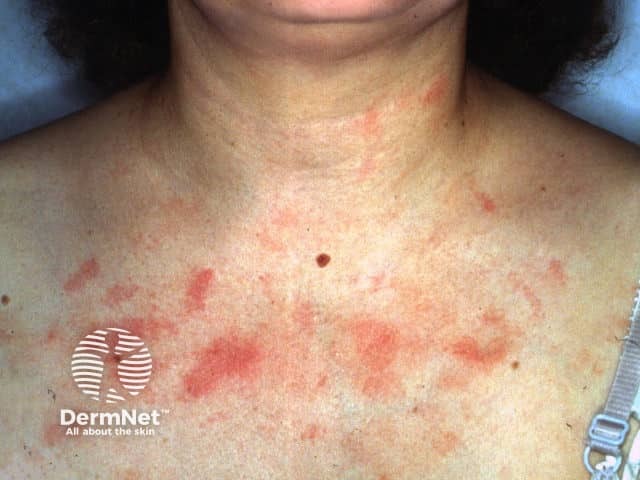Main menu
Common skin conditions

NEWS
Join DermNet PRO
Read more
Quick links
" data-index="1" alt="Go to Introduction
" onclick="event.preventDefault();document.getElementsByTagName('h2')[(1 - 1)].scrollIntoView({behavior: 'smooth',block: 'start'});">Introduction
" data-index="2" alt="Go to Allergens
" onclick="event.preventDefault();document.getElementsByTagName('h2')[(2 - 1)].scrollIntoView({behavior: 'smooth',block: 'start'});">Allergens
" data-index="3" alt="Go to Symptoms
" onclick="event.preventDefault();document.getElementsByTagName('h2')[(3 - 1)].scrollIntoView({behavior: 'smooth',block: 'start'});">Symptoms
" data-index="4" alt="Go to Diagnosis
" onclick="event.preventDefault();document.getElementsByTagName('h2')[(4 - 1)].scrollIntoView({behavior: 'smooth',block: 'start'});">Diagnosis
" data-index="5" alt="Go to Treatment
" onclick="event.preventDefault();document.getElementsByTagName('h2')[(5 - 1)].scrollIntoView({behavior: 'smooth',block: 'start'});">Treatment
Prevention
Nail cosmetics include nail enamels (varnish/polish), nail enamel removers, cuticle removers and artificial nails. Some people may have a sensitivity to one or more of the different chemical components that make up these nail cosmetics. Sensitivity to the offending agent may cause allergic contact dermatitis and/or irritant contact dermatitis not only around the nail area but also around areas that are commonly touched such as the eyelids, mouth and chin, and sides of the neck. Nail cosmetic allergy may also lead to nail diseases such as paronychia, onycholysis and other nail dystrophies.
Nail enamels are most likely to be the most common nail cosmetic used. They include base coats and top coats which are made up of similar chemicals but in different concentrations to achieve varying qualities in the final product.
Nail enamel component |
Chemical/potential allergen |
Quality achieved |
|---|---|---|
Film former |
Nitrocellulose |
Used in topcoats to enhance gloss and minimize abrasion |
Resins |
Tosylamide formaldehyde resin, alkyd resins, acrylates, vinyl, polyesters |
High amounts used in base coats to improve adhesion to the nail surface |
Plasticisers |
Camphor, dibutyl phthalate, dioctyl phthalate, tricresyl phosphate |
Used in topcoats to enhance gloss and create a flexible film after drying |
Solvents |
Alcohol, toluene, ethyl acetate, butyl acetate |
The diluent used to dissolve nail enamel components |
Colourants |
e.g. D&C Red No. 7 |
Provide desired colour |
Pearlisers |
Guanine, bismuth oxychloride |
Used to create colour tones and hues e.g. sparkling effect |
The chemical most responsible for allergic reactions to nail enamel is tosylamide formaldehyde resin. It is sometimes also called toluenesulfonamide formaldehyde resin. In a study by the North American Contact Dermatitis Group (NACDG), tosylamide formaldehyde resin was found to be the seventh most common ingredient causing allergic contact dermatitis in patients with a cosmetic allergy. Although a small amount of free formaldehyde may be found in tosylamide formaldehyde resin it appears that most who react to this resin do not also have a formaldehyde allergy. An allergic reaction is most commonly due to wet nail enamel but some patients may also react to the dried enamel. Other reported causes of dermatitis to nail enamels include allergy to the solvent butyl acetate and discolouration of the nail surface (especially around the cuticle area) caused by colourants.
Nail varnish used as a barrier against nickel allergy can also cause sensitisation.
The strong solvents used in nail enamel removers include acetone, alcohol and amyl, butyl, or ethyl acetate. They are mixed with fatty materials such as cetyl alcohol, lanolin (wool alcohols), castor oil, or other synthetic oils. They work to strip the nail enamel from the nail plate surface. Because of their high solvent concentration irritant contact dermatitis is more likely to occur than allergic contact dermatitis. They may irritate and dry the nail plate and surrounding skin. If used excessively they can cause nail dryness and brittleness.
Cuticle removers are liquids or creams that contain alkaline chemicals to destroy the skin around the cuticle. The chemicals used are usually sodium or potassium hydroxide. If applied and left on for too long they can cause irritant contact dermatitis.
Artificial nails are a cosmetic method that creates the illusion of long and attractive nails. There are basically two methods available to achieve this effect.
Preformed artificial nails come as press-on and pre-glued forms that use an acrylic glue to adhere to the artificial nail and the nail plate. Methacrylate based glue is usually used and may cause allergic contact dermatitis. Another stronger adhesive used is ethyl 2-cyanoacrylate which may cause onycholysis.
Sculptured nails are an alternative and increasingly popular method for achieving long, hard nails. The artificial nails are custom-made to fit the nails perfectly and the process is usually performed by a manicurist for best results. The artificial nail is made up of a blend of chemicals that is painted onto the prepared nail which is surrounded by a template that protects the surrounding skin and allows the formation of an artificial extension. The chemical combination includes liquid methacrylate acid esters such as ethyl methacrylate, powdered polymethyl methacrylate polymer, benzoyl peroxide accelerator, and hydroquinone. The liquid methacrylate acid esters are strong sensitisers and a cause of irritant and allergic contact dermatitis reactions. Benzoyl peroxide and hydroquinone are found to be occasional allergens.
Acrylates, which are used in both preformed and sculptured nails, can cause two rare but very serious reactions, paraesthesias (tingling and prickling) and nail loss. A case of acrylate allergy resulted in nail loss and even after 16 years there was no regrowth.

Nail glue

Nail glue
Individuals with sensitivity to certain chemicals found in nail cosmetics may get allergic and/or irritant contact dermatitis reactions. Fingers may be affected, but more often than not dermatitis develops around the eyelids, in and behind the ears, around the mouth and chin, sides of the neck, and sometimes on the genitalia.
Allergic reactions to nail cosmetics around the fingers usually appear as redness and swelling of the fingertips. Other affected areas show a typical allergic contact dermatitis reaction. There may be intense swelling and redness of the area within a few hours or a rash may appear after a day or two after contact. The affected skin may be red, swollen and blistered or dry and bumpy. Nail plate discolouration occurs with long-term use of coloured nail enamels, particularly if deep red nail polishes that contain D&C Reds No. 6, 7, and 34 are used. The nail plate is stained yellow after 7 days of continuous wear. Staining will fade on its own about 14 days after the enamel has been removed.
In addition to causing allergic and irritant contact dermatitis reactions, some ingredients of nail cosmetics may also cause secondary nail infections such as paronychia, onycholysis, onychia and severe and prolonged paraesthesia. These conditions can be extremely painful, long-lasting and debilitating.
At least one case of chronic urticaria has been reported that was associated with nail dystrophy and contact allergy to acrylates/methacrylates.

Onycholysis to artificial nail and methacrylate glue

Hand dermatitis due to artificial nail and methacrylate glue

Paronychia as reaction to nail enamel

Eyelid dermatitis due to nail enamel allergy

Facial dermatitis due to nail enamel allergy

Chest dermatitis due to nail enamel allergy
Nail cosmetic allergy is diagnosed by performing special allergy tests, i.e. patch tests. Diagnosis may involve testing against a number of different chemicals due to the many potential allergens that nail cosmetics are made up of. The following table shows some of the more commonly tested nail cosmetic allergens.
Nail cosmetic |
Chemical/allergen |
Patch test |
|---|---|---|
Nail enamel (varnish/polish) |
Tosylamide formaldehyde resin |
10% in petrolatum |
Artificial nails |
*Methyl methacrylate monomer |
2% in petrolatum |
2-Hydroxyethyl methacrylate (HEMA) |
2% in petrolatum |
|
Nail enamel removers |
Ethyl acetate, butyl acetate |
10% in petrolatum or olive oil |
Cuticle removers |
Alkalis |
2% in aqueous solution |
*In 1974 FDA banned the use of methyl methacrylate monomer in nail cosmetics. However, an analysis of 31 products sold between 1975 and 1981 revealed that this monomer was present in 9 of them.
Patch testing with nail enamel may be performed by the covered or open method. However, open patch testing is recommended for nail enamel removers and cuticle removers due to their high volatile solvent concentrations.

Positive patch test to methacrylate in nail glue

Multiple positive reactions to acrylates
Nail cosmetic dermatitis should clear rapidly once the nail cosmetic allergen is removed; unless there is a secondary infection or lichenification (thickening/hardening of skin due to chronic dermatitis). Corticosteroid creams with or without an antibiotic may speed up recovery. Management of dermatitis caused by nail cosmetics on other parts of the body may be treated as for any acute dermatitis/eczema; this may include treatment with topical corticosteroids and emollients.
Secondary infections such as paronychia, onycholysis, and onychia may require more aggressive therapy. In some cases, the artificial nail may create a hardened and un-removable shell over the throbbing and swollen nail. Ice cold compresses and treatment with sedatives and systemic corticosteroid therapy may be necessary.
If you have a nail cosmetic allergy the best way to avoid any problems is by avoiding all products that contain the allergen you are sensitive to. Hypoallergenic nail enamels that use polyester resin or cellulose acetate butyrate may be an alternative, but sensitivity is still possible. These alternatives are also less durable and scratch-resistant than enamels made with a tosylamide formaldehyde resin.
Your dermatologist may have further specific advice, particularly if you are highly sensitive to nail cosmetic allergens.